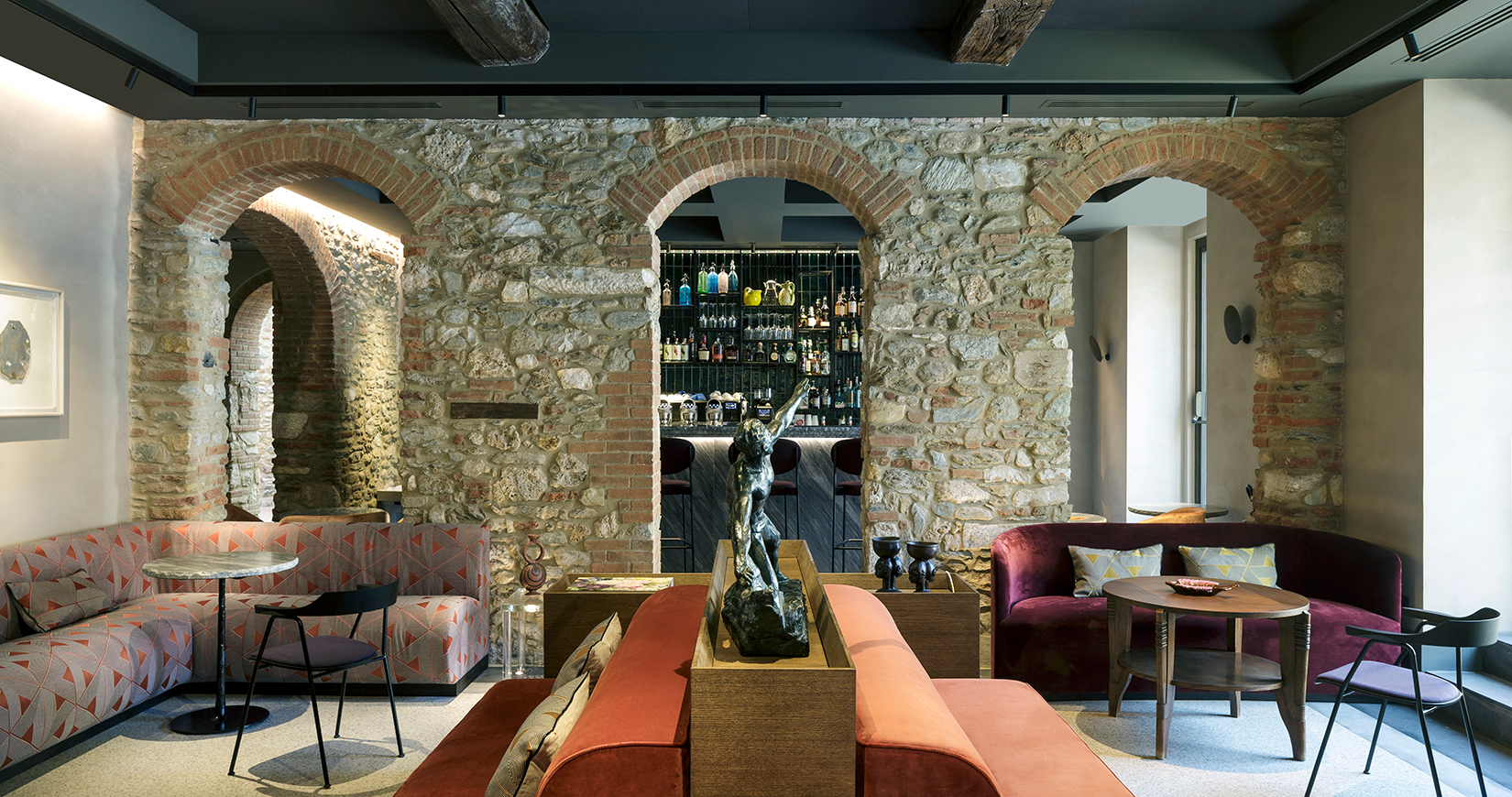Copyright © 2025 Motivate Media Group. All rights reserved.
Point3architecture converts a historic palazzo into a boutique hotel in Tuscany
Paradis Pietrasanta is Point3architecture's first hotel project

For Benjamin Macaire, Thibaut Julien and Victor Jauvin, the trio behind Paris-based architecture practice Point3architecture, Paradis Pietrasanta was a premiere for two reasons. It is the studio’s first hospitality project and its first in Italy. Macaire, Julien and Jauvin, however, were already very familiar with the country, as they used to travel there frequently. Events like Milan’s Salone del Mobile and La Biennale di Venezia, and many cultural trips, drew the trio back again and again.

The French owners of the property, who now live permanently in Italy, trusted Point3architecture to transform what was originally a historic house from the 18th century – formerly home to a countess – into a charming boutique hotel with 12 rooms, plus a restaurant and lounge bar.

“It is said that at that time the property extended to the sea, which is located four kilometres from here,” says Julien. “This traditional Tuscan palazzo is situated at the corner of a 15th-century fortification called Rocca di Sala. Famous sculptor Fernando Botero lives at the highest point of this wall.”

Inaugurated in July, the boutique hotel is an ode to the creative place in which it sits. Pietrasanta – known as the ‘Little Athens of Italy’ – has a long tradition of sculpture, as the town is on the way to the Carrara marble quarries of Florence.

“The renovation consisted of giving a new life to this palazzo while reflecting the history of the place and its original materials,” says Julien. So, both the old house and the ramparts that go through the site were not only preserved but also restored and highlighted. In the restaurant, the architects recreated the atmosphere of a sculptor’s workshop and invited natural light inside via skylights.

The building is organised over three levels. On the ground floor, the public areas include the lounge bar and the restaurant, which opens onto a large garden with marble fountains and a collection of citruses planted by landscape architect Jean Mus. The first and second floors are home to the 12 rooms – each with its own interior design – and the lobby, which opens to the grand terracotta terrace.

Point3architecture has created a haven of peace rooted in its context – with spaces throughout the hotel inspired by Tuscany, and Milan providing the inspiration for its terrazzo floors. “We worked exclusively with natural materials, including marble, terracotta, ceramic and wrought iron … to blend as much as possible with the surroundings and give the feeling that the hotel has always been here,” notes Julien. Natural colours such as ochre and earthy tones prevail throughout, favouring a visual dialogue with the vernacular materials.

The architects worked with craftsmen for almost all the project’s various aspects, and collaborated with Moroccan artist Khalil Minka, who designed the wall tapestries in the rooms and the lobby, bringing a unique character to the spaces.

“The eclectic decorative style is the result of the interaction between the owners’ design and art collection on one side and our selection of lighting fixtures and pieces of furniture inspired by the ’70s in Italy on the other,” expresses Julien.

Despite being a hotel, the atmosphere of Paradis Pietrasanta is more like that of an old family house, which is what gives it its charm. Thanks to the clear vision of the Point3architecture team, who perfectly understood the importance of respecting the past while enriching it with a subtle contemporary interpretation, this project reflects the spirit of its city, discreetly imbued with simplicity and elegance.
The Latest
Turkish furniture house BYKEPI opens its first flagship in Dubai
Located in the Art of Living, the new BYKEPI store adds to the brand's international expansion.
Yla launches Audace – where metal transforms into sculptural elegance
The UAE-based luxury furniture atelier reimagines the role of metal in interior design through its inaugural collection.
Step inside Al Huzaifa Design Studio’s latest project
The studio has announced the completion of a bespoke holiday villa project in Fujairah.
Soulful Sanctuary
We take you inside a British design duo’s Tulum vacation home
A Sculptural Ode to the Sea
Designed by Killa Design, this bold architectural statement captures the spirit of superyachts and sustainability, and the evolution of Dubai’s coastline
Elevate Your Reading Space
Assouline’s new objects and home fragrances collection are an ideal complement to your reading rituals
All Aboard
What it will be like aboard the world’s largest residential yacht, the ULYSSIA?
Inside The Charleston
A tribute to Galle Fort’s complex heritage, The Charleston blends Art Deco elegance with Sri Lankan artistry and Bawa-infused modernism
Design Take: Buddha Bar
We unveil the story behind the iconic design of the much-loved Buddha Bar in Grosvenor House.
A Layered Narrative
An Edwardian home in London becomes a serene gallery of culture, craft and contemporary design
A Brand Symphony
Kader Mithani, CEO of Casamia, and Gian Luca Gessi, CEO of Gessi, reflect on the partnership between the two brands
The Art of Wellness
Kintsugi in Abu Dhabi, situated in a seven-storey villa, offers the ultimate zen retreat
















